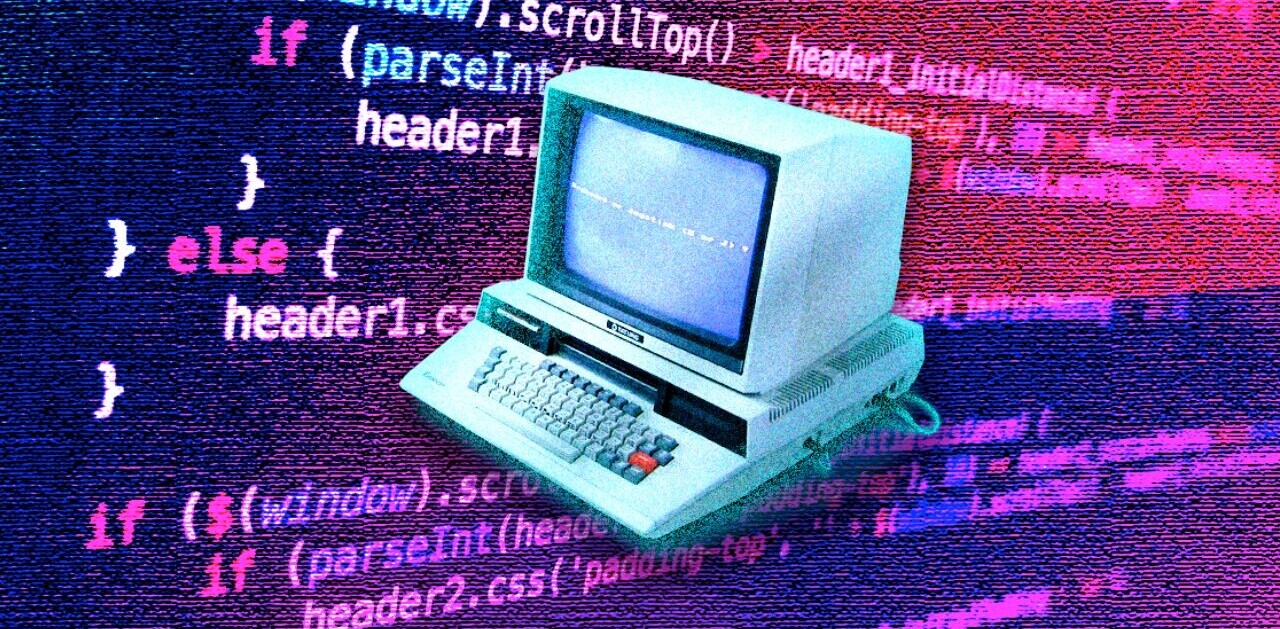
Daniel Jacobson (Twitter | LinkedIn) is the VP of Edge Engineering for the Netflix API. Prior to Netflix, Daniel ran application development for NPR where, among other things, he created the NPR API. He is also the co-author of APIs: A Strategy Guide.
“Get busy living, or get busy dying” – Shawshank Redemption
Building great engineering teams is difficult, but it is also increasingly important as the world in which we live is more than ever driven by software. Because of this growing importance, it is essential for engineering leaders to maintain a culture of innovation within their teams to ensure high performance and to keep the company ahead of the curve.
In high performance cultures like at Netflix, there are basically two outcomes that will play out over time for engineering teams. Either the team will enjoy an upward spiral established by a strong culture of innovation or it will spiral in the downward direction, resulting in an inevitable decay of the team and its products.
Here are my experiences as an engineering leader and how I’ve worked to build a culture around innovation for my teams, virtually at all costs.
The downward spiral
For most engineering teams, it is easy to enter a steady state of development and maintenance as systems get off the ground and mature.
Accordingly, managers often slow or halt hiring as the amount of work is relatively well-understood. As a result, the engineers on the team enter a daily or weekly (or perhaps monthly) ritual of incremental improvements, responding to requests, and fixing bugs.
As engineers churn through task lists, however, they become bored, uninspired, and complacent, resulting in degradation in velocity and/or quality. That degradation will result in more churn around testing and/or support issues, which will further frustrate and bore the engineers while generating more potential for system failures that will increase the churn.
The more churn, the more turnover in staff; the more turnover in staff, the more additional churn. This downward spiral can play out very quickly or it can take quite a while.
In either case, there is a clear direction, it is inevitable, and it has a bad ending.
Upward spiral
The way out of the downward spiral is to make some very difficult decisions that have short-term ramifications for the benefit of the long term. I call this “taking your lumps.”
If you take your lumps now by deferring non-essential work, it frees the team up to think about the long-term and to seek patterns in their work, systems, and operations. Through these patterns, the team can potentially program away a class of work that otherwise would occupy the team’s time on an ongoing basis.
Eliminating a class of work enables the team have more available time in the future to seek other such patterns or opportunities, which will create even more available time.
With the available time, not only is the team further alleviated from the daily churn of reacting to external needs, they are also able to pursue higher order projects that allow the team to make transformative leaps forward rather than churning to keep up or making minor incremental improvements.
Repeated enough, this will eventually become part of the team’s culture, resulting in higher quality work and greater velocity. Unlike the downward spiral, there will positivity around the team that will be infectious and will create a breeding ground for attracting new talent.
Virtually every engineering team will find itself in one of the two aforementioned trajectories. It might not be obvious which way things are headed, but there will be a trend one way or the other.
It is the job of the engineering leader to ensure that the spiral is upward. Here are my 10 philosophies and approaches that I employ with my teams to strive for the upward trajectory:
1. Establish a strong identity
Be very clear on the identity of the team and establish a set of philosophies against which the team can operate. Be stubborn about adhering to the identity. The more that identity gets compromised by one-off requests, the more the architecture weakens, the more churn the team will have to deal with, and the more likely morale will suffer.
Be clear on what you will and won’t do and make sure the team knows these boundaries, lives them, and communicates them to others.
2. Important vs. Urgent
In “The 7 Habits of Highly Effective People,” Stephen R. Covey talks about the difference between urgent and important. Engineering organizations can very easily fall into the trap of being highly reactionary to externally imposed requests.
While many of these externally imposed requests are very important (and in fact, even if they are not), they tend to team’s attention as both urgent and important. But there are many other tasks or efforts that are very important despite the fact that they are internally driven and elective.
Understanding this distinction and being able to distinguish which tasks fall into which category is paramount in getting out of the churn and enabling that first critical step: introspection.
3. Introspection
Introspection is the key to innovation. Handling requests from a range of external (or even internal) stakeholders is the natural, easy thing for a team to do. Taking a step back from those requests and looking for patterns across them while imagining what they might look like in the future will give a broader and more impactful perspective.
If the system gets refactored in some other way, will that eliminate a class of requests in the future? Given how the industry is evolving, can you anticipate weaknesses in the system’s architecture that should be examined now? These are examples of important questions that can help springboard your team out of their everyday churn of satisfying urgent requests.
4. Don’t throw good money at bad
During the introspection process, it is important to be future-oriented. Your team has a lot of functioning code and other system-oriented assets which should be considered.
That said, they should only be considered after evaluating the long-term needs of the team and its relationship to its constituents. Imagine starting from scratch and target that as your outcome. From there, it is much easier to see how, if at all, existing assets can play a role in that future state (or in the transition to get there).
5. Hire beyond your needs
The most important resource to enable introspection is time. Many companies and hiring managers work towards “right-sizing” their teams. That is, they project what the incoming requests will be for the team and attempt to staff the team based on those expectations.
This is perhaps the biggest flaw that a team manager can make when building and operating an innovation team because that will ultimately limit the amount of available time for introspection.
Instead, hiring managers should staff beyond the bandwidth needed for known tasks. This will give the team the ability to swell and contract its focus on such work while continually maintaining a reasonable amount of time towards introspection and innovation.
6. Great engineers NEED to be challenged
If staffing is such that your great engineers are spending the majority of their time handling very tactical work, they will slowly but surely lose interest in the job and eventually leave.
Of course, doing that kind of work is a necessary part of every engineering job, but there needs to be a balance for great engineers to remain happy and excited about their work. Engineers need to also have deep architectural challenges that allow them to think, to stretch their minds, and to have a greater value to the company than just keeping the lights on.
In fact, most of them want to have the freedom to identify and pursue these challenges in a way that help them feel empowered and impactful. That is why engineers get into this field in the first place and if that is not available in their current job for too long, they will find those opportunities elsewhere.
7. Instill a culture of (good) laziness
There are two kinds of “lazy” in engineering: bad laziness and good laziness. Bad laziness is allowing yourself to repeat the same tasks over and over because that is easier than stepping back, looking for patterns, and spending the up-front time to program those tasks away. Manual deployment pipelines or manual tests are great examples. But ultimately, if a human can do it, a computer can (and should) do it too.
This is where good laziness comes in. Great engineers will ultimately be fed up with the arduous nature of the repeated task and seek to eliminate that work from his/her docket.
8. Innovation breeds innovation
Once an initial innovation occurs that liberates the team from some encumbering set of repeated tasks, the team now has some newly available time. That time can be used in any number of ways, but to maximize its utility the team should use that time for even more introspection which paves the way for the upward spiral.
The more such innovations that the team can yield, the more likely the team can yield more innovations. This is the case, not only because of the growth in available time, but also because it eventually becomes part of the team’s culture.
9. Don’t treat your systems like your baby
Many people in the engineering world grow very attached to the systems that they build. It is easy to establish that loyalty as engineers spend a lot of time working on a specific system. In fact, I have often heard people call their systems their baby (I may have been guilty of that in my past as well).
There is a value in growing so attached to the systems in that is does strengthen the bond and builds pride for the team as they strive for excellence with that system. That said, there is a long-term detriment to this as well.
Systems, like virtually any piece of technology, have a limited shelf life. At some point, the system will hit its limit and will need to be overhauled or replaced.
Loyalty to that system clouds one’s objectivity about what is best. We need to be able to treat our solutions as tactics towards a broader goal and if the tactic is no longer effective we need to abandon it.
10. There’s no such thing as maintenance mode
If a system is to go into maintenance mode, it really means one of two things: It is either not an important system anymore (which begs the question as to whether or not it should just be retired outright) or the business function is still important to the company even though the company no longer wants to invest in the system that supports it.
As part of the team’s culture, it is important to aspire to eliminate the idea of maintenance mode from the team’s vernacular.
Maintenance mode has two main detriments. First, it adversely affects the team’s morale and goes against the spirit of great engineers, which is to constantly be challenged. Second, most maintenance systems conflate the idea of supporting a legacy system with supporting its business function.
In fact, the latter is the real goal and an innovative team will seek ways to retire legacy systems in favor of future-oriented systems that still supports the required business function. This is not always easy or feasible, but you should always be seeking opportunities to move on from the legacy system. Sometimes executing on that migration work is of equal or greater value to pursuing new innovations.
External risks
Ultimately, all of these principles depend on having excellent talent on the team. No amount of leadership can offset the challenges introduced by having the wrong skills or people.
Another risk is that many engineers like to chase the shiny new objects. There is a balance that needs to be maintained between enabling great engineers to experiment, innovate, and identify and pursue challenges with their propensity to play with emerging technologies.
It is also worth noting that there are often external forces that prevent some organizations and/or leaders from achieving the above philosophies. For example, not all companies have enough available resources to staff beyond the needs or they may have a legacy of disparate and unrelated technologies that make it inherently more difficult to find a path out of the churn.
As a result, these philosophies require a strong company-level culture that puts leaders and teams in a position to achieve greatness. If the culture is there, however, these 10 philosophies, if truly embraced, will help springboard your team to being innovative and non-reactionary.
Get the TNW newsletter
Get the most important tech news in your inbox each week.







